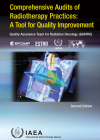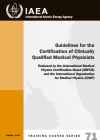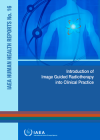Radiotherapy is one of the most widely used therapies for cancer treatment. It consists of using radiation in its different forms (X-rays, Gamma rays, particles) to harm and destroy tumours, either alone or in combination with surgery or chemotherapy. Radiotherapy is either external (teletherapy) or internal (brachytherapy).
Teletherapy
Teletherapy refers to radiation therapy given by an external radiation source at a distance from the body. It is the most common type of radiotherapy used in cancer treatment and is usually given by a Cobalt unit, which delivers high energy gamma rays, or a linear accelerator, which can deliver high-energy X-rays or electrons. In the most common scheme, treatment is given daily for a period of 4-8 weeks.
To deliver an even dose of radiation to the target, which may be several centimeters thick, the radiation source is placed at a distance from the patient (usually 80-150 cm). Healthy tissue, including skin, in the path of the beam can also be irradiated. To reduce this effect, higher-energy beams are used for deeper tumors and treatment is delivered from several angles, which maximizes the dose at the intersection.
Modern teletherapy techniques
Newer techniques, such as 3-D conformal radiotherapy, intensity modulated radiotherapy, and image guided radiotherapy, obtain an extremely accurate shaping of the target that receives the prescribed dose of radiation. These techniques allow radiotherapy to deliver a lower dose of radiation to healthy tissues and a higher dose to the tumor. Patients receiving radiotherapy experience no physical sensation while being exposed to the radiation; it resembles very much having an X-ray. Side effects do, however, occur. In rapidly dividing tissues, such as mucosa and skin, early reactions are similar to ‘sunburn.’ In slow dividing cells, for instance those in the kidney or vasculature supporting the brain and spinal cord, tolerance to radiation is lower. If treated above a certain threshold, they are at risk of developing late effects that usually become apparent many months after treatment.
Modern technology permits considerable geographical sparing of vital organs. Another important tool is radiobiological research that helps select the best treatment schemes. A comprehensive quality assurance programme should be in place.








